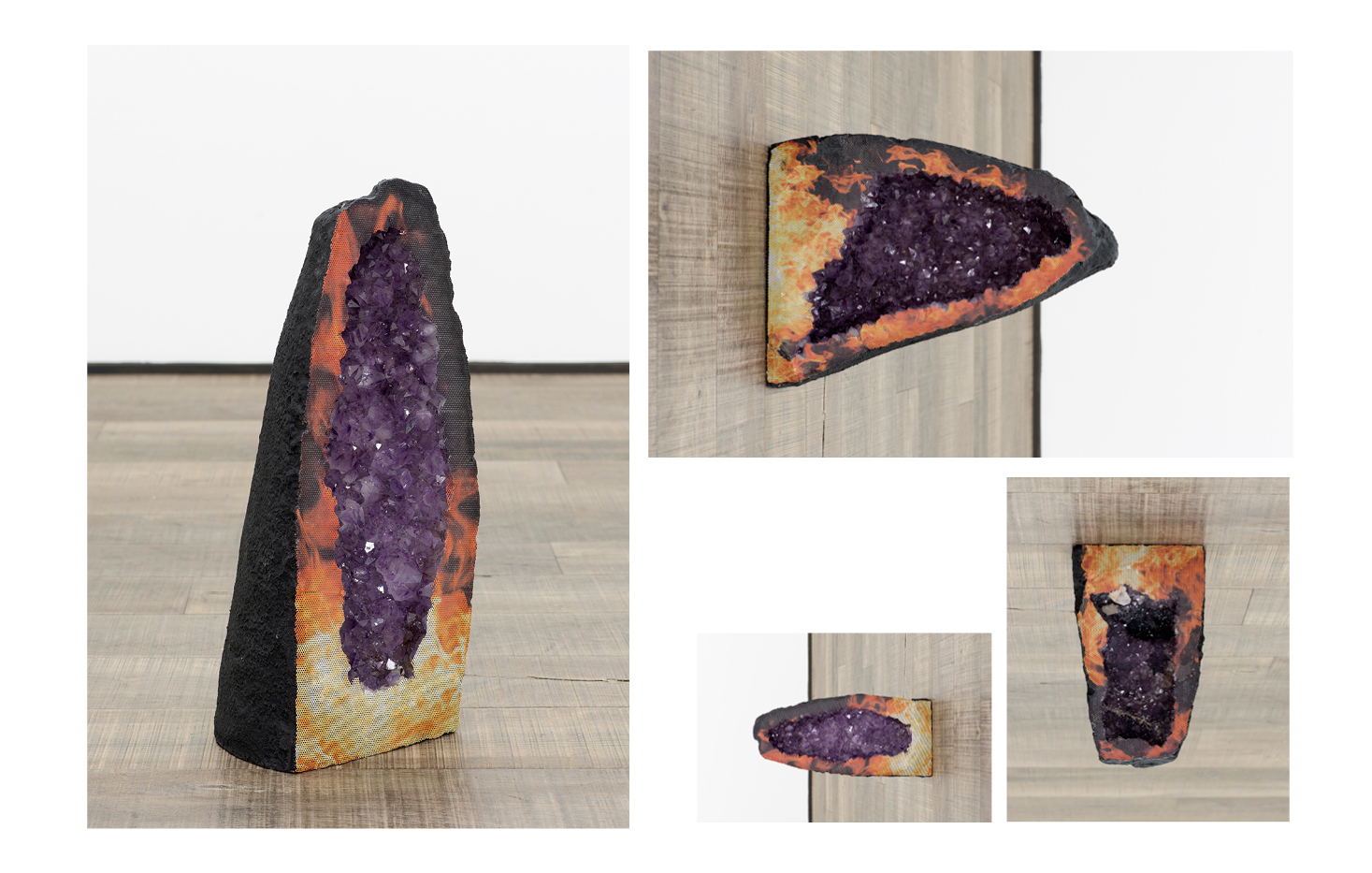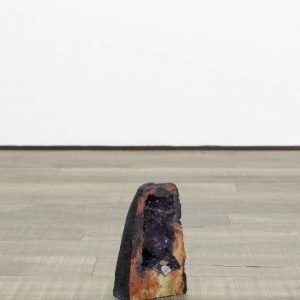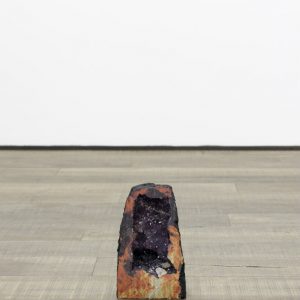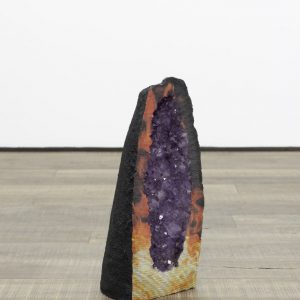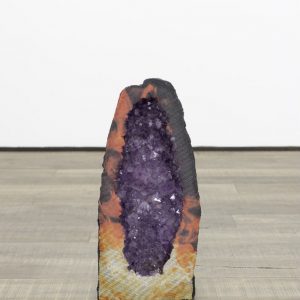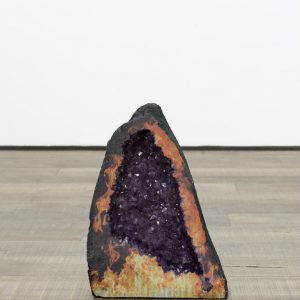For Peter Sutherland, the image is a starting point, not a final product. A picture of a passing moment may fester in his mind, being reshaped and reformed until it ends somewhere unexpected – a mountain printed across particle board, an advertisement printed on the face of a rock. He is not limited in medium.
For an artist so well regarded, Sutherland came late to image making, first falling in love with photography when his brother gave him a camera at age 23. “I liked the balance of it,” Sutherland says, “the challenge of trying to pull meaningful or funny or poetic images from everyday life.” Growing up in the late ‘80s, the heyday of “rad,” when skateboarding, snowboarding and mountain biking exploded from niche into mainstream consciousness, Sutherland’s affinity for the aesthetic of the era permeates his recent work: a pyramid of water bottles covered in bootleg stickers, snapshots of vintage ski graphics. “All those little stickers and graphics and stuff were kind of my TV,” Sutherland says. “Those were the ways people were expressing themselves.”
There is an awareness required, though, Sutherland says, to working with visuals so commonly associated with youth culture. “Sometimes I actively have to make my work seem less young,” he says, laughing. “There is a bit of nostalgia in there, but it’s not all nostalgia.” It is no surprise Sutherland’s work resonates with those at the meeting space of art and the outdoors. His work is often rooted in, though not without a critique of, the activities that gave many of us our first introduction to the power of nature, to gravity as an accelerating force.
Recently Sutherland has evolved from simply alluding to mountains to mixing images with the very materials of mountains: rocks. “I was thinking about flat surfaces I could put images on,” Sutherland says. “I thought ‘Oh, these cut rocks have flat sides. What would happen if you intervened with that?’” The resulting photographs, printed on the face of geodes, are some of his most striking and inventive pieces to date. Part sculpture and part image, the crystals stand imposing, carrying their own connotations as objects with hollows of purple and silver teeth. When plastered with an image of flames, a shaman or a marijuana plant, the rocks become a conversation. Earth and art, Sutherland makes one out of the other.
An artist is judged by the end results – objects in a gallery, images on the web. For Sutherland, the process is as important as the product, crediting “blind faith and trusting your instincts” more than specific techniques. “I work in a way that’s not about pre-visualization,” Sutherland says. “It’s about having an experience, recording it, editing it, then trying to recontextualize or repackage it in the form of artwork.” Art has the rare ability to be both personal and universal for individual experiences and documentations to resonate with strangers. Sutherland’s work settles in that sweet spot, binding nature, sport and the randomness of design in each.
This article was originally published in RANGE Magazine Issue Three.
Images by Peter Sutherland.
